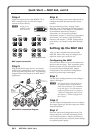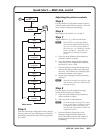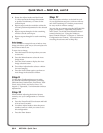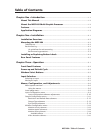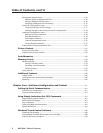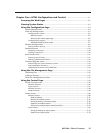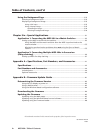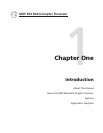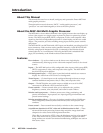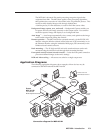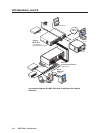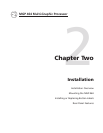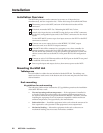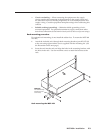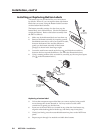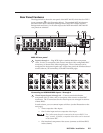
MGP 464 • Introduction
1-2
Introduction
PRELIMINARY
About This Manual
This manual discusses how to install, congure, and operate the Extron MGP 464
multi-graphic processor.
Throughout this manual, the terms “MGP,” “multi-graphic processor,” and
“processor” are used interchangeably to refer to the same product.
About the MGP 464 Multi-Graphic Processor
The MGP 464 is a four-window RGB and video signal processor that can display up
to four video sources on a single screen in picture-in-picture or picture-by-picture
format. The MGP accepts RGB, HDTV, component, S-video, and composite video
signals on four fully-configurable inputs and 15 virtual inputs; and has one scaled
output. The processor provides switching among inputs and has picture controls
and presets.
The MGP 464 DI is an MGP 464 with a DVI input card installed, providing four DVI
input connectors. Both versions can be controlled remotely via the RS-232/RS-422
interface using Special Instruction Set (SIS
™
) commands or the Windows-based
control software, or via an Ethernet LAN using the MGP 464’s embedded Web
pages, SIS commands, or the Windows-based control software.
Features
Four windows — Up to four windows can be shown on a single display
simultaneously, allowing up to four video and computer sources to be viewed
at once.
Inputs — The MGP 464 has four fully congurable video inputs, which accept RGB,
HDTV, component, S-video, and composite video signals. The MGP 464 DI
has four DVI inputs in addition.
DVI background input — A DVI input is provided on both models as a means to
display live video from a DVI source as a background.
Virtual inputs — 15 virtual inputs can be configured through software to accept
standard definition component video, S-video, and composite video.
Output — The MGP 464 has one scaled output, available on a set of ve BNC
connectors for RGB and a DVI-I connector for DVI.
Picture controls — Picture controls allow you to adjust the size, position,
brightness, contrast, color, tint, detail, and zoom for each window.
Window and input presets — Window presets save sizing, positioning, and
priority information. Input presets save input signal type information and
picture control settings.
Window transition effects — Six types of window transition effects (22 different
effects altogether) seamlessly mute and unmute (close and open) the four
windows.
Freeze control — Freeze control freezes (locks) a window to the current image.
3:2 pulldown detection for NTSC video and 2:2 film detection for PAL — These
advanced film mode processing features help maximize image detail and
sharpness for video sources that originated from film.
When lm is converted to NTSC video, the lm frame rate has to be matched
to the video frame rate in a process called 3:2 pulldown. Jaggies and other
image artifacts can result if conventional deinterlacing techniques are used on
film-source video.



